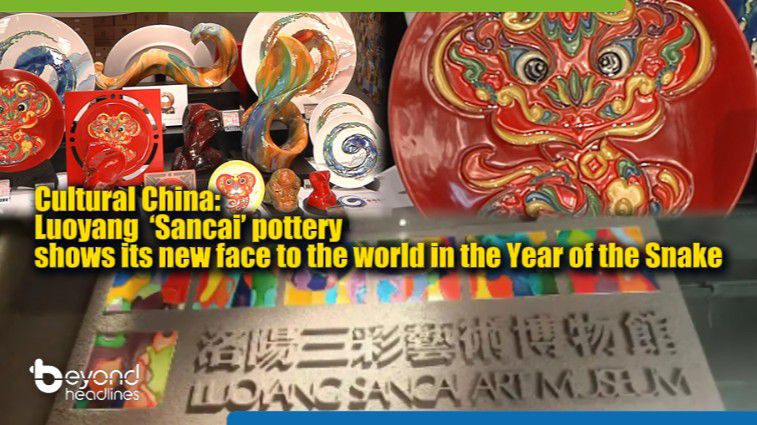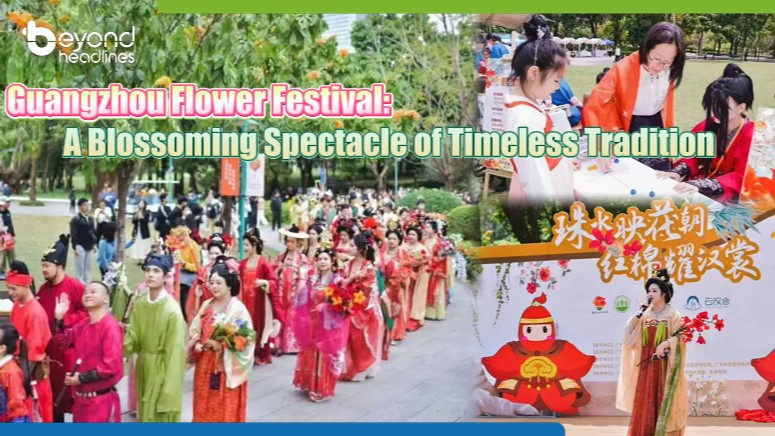Liu Mingxiang, Deputy General Manager of a Guest House
Sayram Lake is my home. I grew up by the side of Sayram Lake since I was a child.
We arrived at Sayram Lake, known as the "Pearl of Heavenly Mountain" (Tianshan), in October of the golden autumn. The blue lake and golden grassland complement each other, creating a unique and magnificent beauty. It lies between the mountains and grasslands, like a blue gemstone. The color of the lake varies with the terrain, presenting different shades of blue. The "Sayram Lake Blue" is truly captivating.
Here's a romantic saying: "I’ve been waiting seventy million years to meet you." It refers to the birth of Sayram Lake during the Himalayan mountain-building event seventy million years ago. When I arrived here, I also felt like I was too late to have visited this beautiful place. In some places, we can witness the beautiful lake view, with stunning blue scenery in front of the eyes, similar to the scenery in Southeast Asia; in other places, you can see towering mountains and lush trees in the distance, which look like the typical northern landscapes. Countless gorgeous views unfolding within just a glance, it's truly amazing.
Liu Mingxiang is the deputy general manager of a campsite in Sayram Lake, Xinjiang. Except his daily management work, he always picks up long pliers and a large plastic bag to clean up all the nearby garbage even though this is not his job duty. He is a native of Bortala Mongolian Autonomous Prefecture and witnessed the “rebirth” of Sayram Lake after an ecological catastrophe. Today’s beautiful scenery requires people’s meticulous care. Liu Mingxiang now returns to work at Sayram Lake and cherishes everything here even more.
Liu Mingxiang, Deputy General Manager of a Guest House
I was born and raised in Wenquan County of Bortala, which is only fifty or sixty kilometers away from here. When I was young, we used to visit here very often. Back then, we didn't own a car, so we would ride our bikes here. The grass was usually knee-high. As I grew older, I went to school in other places and visited here less frequently. But when we came back here more than ten years ago, we noticed a big difference from twenty years ago. The grassland was very short, and there were many places where stones were exposed.
Due to various reasons such as global warming and excessive human activity, Sayram Lake has had a distressing past. The grasslands on both sides of the lake have severely degraded. At one point, it presented a situation of “sheep eating grass roots while wind and sand blowing over the stove.” The environment was destroyed, and many animals that originally lived around Sayram Lake lost their habitat. The once thriving ecology of Sayram Lake has lost its original vitality. If no one persists in maintaining it, the beautiful scenery may have already disappeared.
Liu Mingxiang, Deputy General Manager of a Guest House
Over a decade ago, the road around the lake was not paved and was just grassland, easily trampled and damaging the vegetation. Now, there is a specially constructed road and wooden plank path around the lake, allowing people to get close. In the past, the grassland was marred with tire marks, but now these situations no longer exist. Over the past decade, through scientific prevention and control, it has been restored to the state of the past, basically.
Running along the wooden plank road by the lake, I breathed in the fresh air and appreciated the endless blue in front of me, escaping the hustle and bustle of the city. Despite the slight chill in the October wind, the healing scenery filled me with gratitude. Thanks to the efforts of the people of Sayram Lake, the ecology of this "Pearl of Heavenly Mountain" has been restored and presented in all its glory today.
To restore the surrounding areas of Sayram Lake, the Sayram Lake Scenic Area Management Committee was established by the Bole Municipal Government in 2007 to carry out systematic conservation and restoration work. One important measure taken was the "restoration of grasslands from grazing land." With nearly RMB 200 million investment from the local government, the area of "restoration of grasslands from grazing land" around the lake reached 425,000 mu, equivalent to half the area of Hong Kong Island.
Mai Hailiyaer/Deputy Director of the Resource and Environment Bureau of Sayram Lake Tourist Attraction Management Committee of Bortala
Mai Hailiyaer: Initially, it was challenging to communicate with the herdsmen who had been grazing and living in the area around the lake for a long time. However, after clearly explaining the advantages of the work, they gradually understood our efforts and were willing to cooperate with us. They also supported the ecological restoration project implemented by the Sayram Lake Scenic Area Management Committee.
Burmie: Will they receive a subsidy or something else?
Mai Hailiyaer: They have an annual subsidy for no-grazing, in particular for summer pastures. On average, each household can receive around 50,000 RMB, which is better than what they could get from grazing.
Burmie: Is it still being offered now?
Mai Hailiyaer: Yes, it is offered every year.
To effectively arrange the herdsmen, relevant departments have established sites to address the settlement of the herdsmen and the availability of forage bases. They are being guided towards re-employment opportunities in the Sayram Lake Scenic Area, enabling them to partake in the benefits of ecological restoration.
The green measures for Sayram Lake are holistic, covering various ecological elements such as “mountains, water, forests, lakes, grasslands, and wetlands.” The government has invested RMB 700 million to restore the grasslands that have been severely damaged back to their original state. They have completed the restoration of 45,000 mu of bare land around the lake by improving the vegetation and grassland there, with a total area equivalent to 4,200 standard football fields. They have also restored 164,500 mu of typical steppe, equivalent to 15,000 standard football fields.
The Naadam Festival at Sayram Lake, held annually from July to August, attracts herdsmen from around the world to partake in horse racing, wrestling, archery, and traditional dances, portraying vibrant scenes of life in grassland. To avoid continuous damage to the grasslands around the lake area and not to affect the local people’s love for the festival, local government has built another racecourse in the downtown of Bole and moved the event out of Sayram Lake. Despite the change in location, the herdsman traditions remain intact. During winter, when the vast grassland is blanketed in white snow, Sayram Lake hosts the "Ice and Snow Naadam Fair," showcasing the cultural diversity and beauty of Sayram Lake in different seasons.
In terms of water management, there is a famous saying in the area: “Not a drop of sewage should run into Sayram Lake.” To achieve this, two sewage treatment plants have been built in the park, which continuously take away the sewage water 8 hours a day.
Zhuo Rigetu /Executive of the Planning and Construction Bureau of Sayram Lake Tourist Attraction Management Committee of Bortala
The tourist attraction adheres to the concept of “Lucid waters and lush mountains are invaluable assets.” To protect the lake water and the basic infrastructure in the scenic area, more than ten ecological and environmentally friendly toilets have been built. The sewage from the toilets is transported to our sewage treatment plant every day through our environmental sanitation vehicles.
After sewage treatment reaches Grade I-A Discharge Standard, it is then used for green irrigation. Currently, Sayram Lake belongs to Case 2 waters, with some areas classified as Case 1 waters, and it has become a natural breeding ground for the whitefish. The ecological restoration efforts at Sayram Lake have not only contributed to environmental conservation but have also generated new economic opportunities for the local community. Sectors such as green tourism, fisheries, and agriculture have flourished, being Xinjiang's new ‘business card’ to the world.
We were very fortunate to have encountered a group of swans that were nesting in the wetlands on that day. The locals said that the environment has improved, and the number of wintering swans has been increasing year by year. To ensure that various animals can settle down in Sayram Lake with peace of mind, the scenic area has also built wetland protection facilities such as boundary piles, 100 bird nests and 50 eagle stands. It has also established a laboratory for monitoring harmful organisms, bird observation points, and wildlife rescue stations. With the return of various animals to Sayram Lake, it has regained its vitality and vigor.
In 2021, Sayram Lake was rated as a “National 5A Tourist Attraction.” With further improvement of the scenic spot’s reputation, Sayram Lake, which boasts starry skies, lake views, Tianshan Mountains, and grasslands, has become an excellent place to appreciate the beauty of the original ecology there. Staying in the Mongolian yurts, or lying in the car to watch the stars of the Milky Way… these romantic experiences have been attracting tourists from all over the world. However, how to avoid burdening the environment while welcoming tourists?
Liu Mingxiang, Deputy General Manager of a Guest House
Liu: All of our constructions are built on grassy slopes. Everything on the grassy slopes could be removed during demolition, and nothing would be left on the ground except for a grassy field. The area could be restored to its original state very quickly.
Venus: What about the materials? Are there any regulations?
Liu Mingxiang: The materials used are all wood and metal.
In addition to doing business, everyone is also very concerned about environmental protection. In the hearts of the people of Sayram Lake, they already have a common belief, which is to protect this “land of purity” together.
B: The Sayram Lake area is even bigger than the entire Hong Kong. I felt that humans are so tiny in front of nature. Some damages are not reversible. So we should really respect, conserve, and protect nature.
V: I’m generally proud of the remarkable conservation work done here. Having traveled to many places around the globe, I have never seen such attention to detail in terms of building requirements, waste management, soil treatment, not to mention reducing human activities around the lake. These are really good examples for future planning and development for other areas in the mainland.












